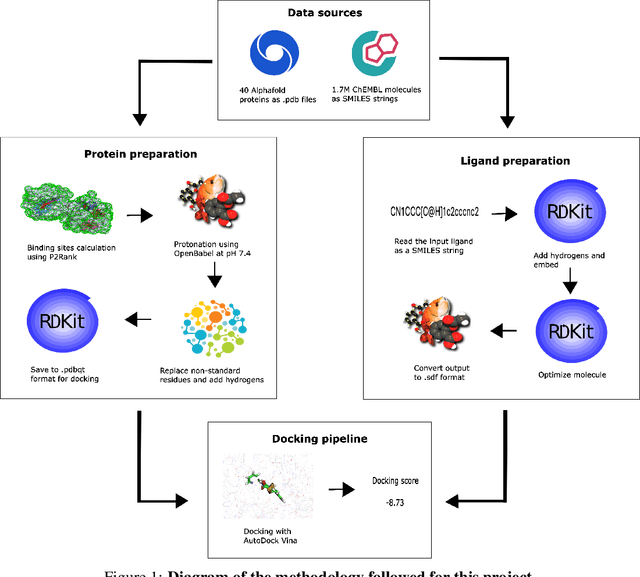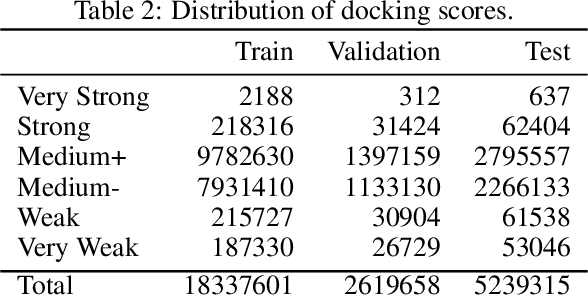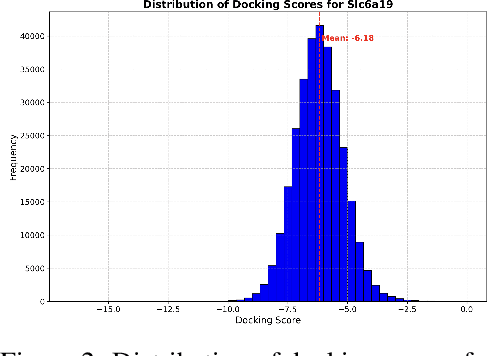Thomas Le Menestrel
Smiles2Dock: an open large-scale multi-task dataset for ML-based molecular docking
Jun 09, 2024



Abstract:Docking is a crucial component in drug discovery aimed at predicting the binding conformation and affinity between small molecules and target proteins. ML-based docking has recently emerged as a prominent approach, outpacing traditional methods like DOCK and AutoDock Vina in handling the growing scale and complexity of molecular libraries. However, the availability of comprehensive and user-friendly datasets for training and benchmarking ML-based docking algorithms remains limited. We introduce Smiles2Dock, an open large-scale multi-task dataset for molecular docking. We created a framework combining P2Rank and AutoDock Vina to dock 1.7 million ligands from the ChEMBL database against 15 AlphaFold proteins, giving us more than 25 million protein-ligand binding scores. The dataset leverages a wide range of high-accuracy AlphaFold protein models, encompasses a diverse set of biologically relevant compounds and enables researchers to benchmark all major approaches for ML-based docking such as Graph, Transformer and CNN-based methods. We also introduce a novel Transformer-based architecture for docking scores prediction and set it as an initial benchmark for our dataset. Our dataset and code are publicly available to support the development of novel ML-based methods for molecular docking to advance scientific research in this field.
Using Pre-training and Interaction Modeling for ancestry-specific disease prediction in UK Biobank
Apr 26, 2024Abstract:Recent genome-wide association studies (GWAS) have uncovered the genetic basis of complex traits, but show an under-representation of non-European descent individuals, underscoring a critical gap in genetic research. Here, we assess whether we can improve disease prediction across diverse ancestries using multiomic data. We evaluate the performance of Group-LASSO INTERaction-NET (glinternet) and pretrained lasso in disease prediction focusing on diverse ancestries in the UK Biobank. Models were trained on data from White British and other ancestries and validated across a cohort of over 96,000 individuals for 8 diseases. Out of 96 models trained, we report 16 with statistically significant incremental predictive performance in terms of ROC-AUC scores. These findings suggest that advanced statistical methods that borrow information across multiple ancestries may improve disease risk prediction, but with limited benefit.
 Add to Chrome
Add to Chrome Add to Firefox
Add to Firefox Add to Edge
Add to Edge